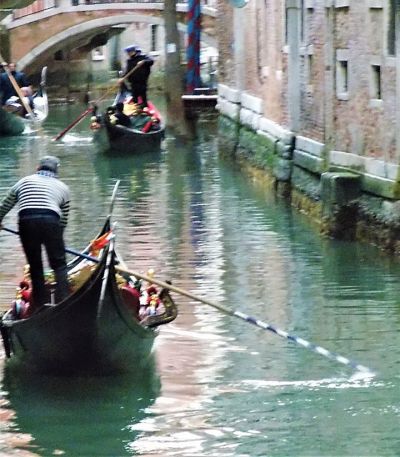Se siete stati a Venezia vi sarà capitato di vedere ai piedi di qualche gondoliere particolarmente ligio alla tradizione o appese fuori dall’entrata di caratteristici negozietti, delle pantofole/scarpe di velluto: le furlane. Queste calzature stanno vivendo una grande ribalta, ma annidano le proprie radici nelle campagne friulane ottocentesche e nella seconda Guerra Mondiale. A quel tempo, i materiali a disposizione erano e pochi e, anche solo per vestirsi, era necessario affidarsi al riciclo. Le gomme delle vecchie biciclette venivano usate per la suola, i sacchi di juta e gli stracci, invece, per la tomaia. Nasceva, così, una scarpa pratica e originale, mai uguale a se stessa, apprezzatissima anche dai gondolieri di Venezia per la sua capacità di non lasciare tracce sulla vernice della gondola. Oggi più che mai, questo mito della tradizione italiana vive una nuova era, riportato in luce dalle case artigiane che hanno saputo mantenere saldo il passato, guardando al futuro.
When you think of Venice, typically your first thought is of the iconic gondola. These traditional, flat-bottomed Venetian rowing boats glide along the grand canal and the many quiet canals traversing the islands that make up this city. You can enjoy watching the over 400 glossy, black gondolas silently passing under the numerous bridges, occasionally hearing the echo of a gondolier serenade.
Gondoliers dress in the official “uniform” of navy or red striped shirts, dark pants and often the iconic straw boater. An official clothing store at the foot of the Rialto bridge, Emillio Ceccato, sells the authentic items.
Gondola stations can be found throughout Venice and you can usually find a group of gondoliers waiting for the next passenger. During a delightful day with Elizabeth Rainer, one of the three contributors to “My Pretty Venice,” a guide to finding Venetian artisans and experiences, we stopped at S. Polo #60 off the Rialto Bridge to find the shoes often called gondolier slippers or le furlane. When you enter this small store, vibrant colors fill your sight. The slippers line shelves from floor to ceiling in linen, silk, velvet, and other novelty fabrics. Handmade by women in the area, they were perhaps the first recycled products available. As poverty struck Italy in the 19th century, le furlane were created from old bicycle tires and jute sacks – waterproof and hardwearing materials. A family from the Friuli region recognized the need for le furlane in Venice and brought them to the area. The slippers quickly became popular amongst Gondoliers who appreciated the furlane because they didn’t damage the finish of their boats and worked well on wet surfaces. Today, you can find the slippers in several styles and many fabrics or bring your own fabric to have a pair custom made.
There are stores offering imported slippers, but I chose a “Made in Italy” pair, a souvenir, one I could wear while supporting local artisans in Venice. A day-long search of the feet of Gondoliers in the canals proved that today’s Gondoliers wear sneakers, dress shoes or nothing at all on their feet. But, le furlane remain a fashion trend for people all over Venice.
https://www.lagazzettaitaliana.com/travel/9014-le-furlane#sigProId5cac50a6fb




